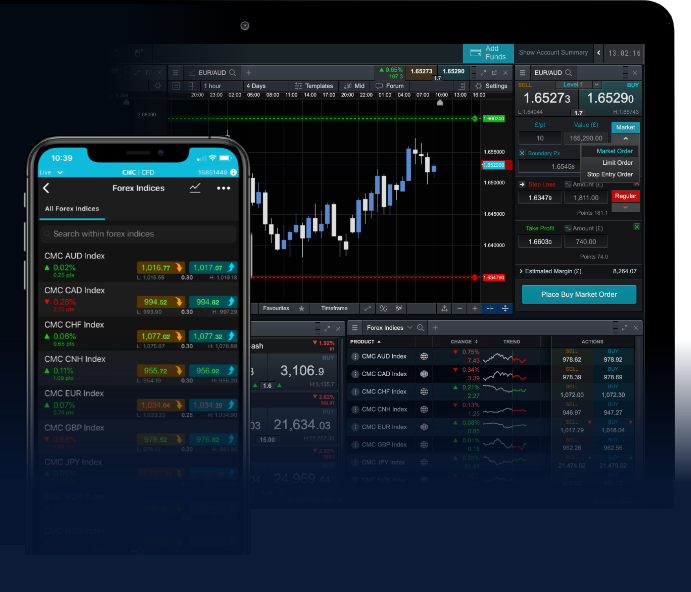
Forex trading is a dynamic and complex marketplace where currencies are bought and sold, and it represents the largest financial market in the world. With a daily trading volume exceeding $6 trillion, it’s no wonder that many traders and investors are drawn to it. In this article, we will explore the basics of forex trading, provide a practical example, and highlight how utilizing a broker like forex trading example Trading Broker UZ can enhance your trading experience.
What is Forex Trading?
Forex trading, also known as foreign exchange trading, involves exchanging one currency for another in the hopes of making a profit. Unlike other financial markets, forex operates 24 hours a day, five days a week and involves a decentralized global network of banks, brokers, institutions, and individual traders. The primary goal is to predict currency price movements and execute trades accordingly.
The Basics of Forex Trading
To understand forex trading, one must be familiar with several key components:
- Currency Pairs: Currencies are traded in pairs, such as EUR/USD (Euro/US Dollar), USD/JPY (US Dollar/Japanese Yen), etc. The first currency is the base currency, and the second is the quote currency.
- Bid and Ask Price: The bid price is the amount a trader expects to receive when selling a currency, while the ask price is the amount a trader expects to pay for a currency. The difference between these prices is known as the spread.
- Leverage: Leverage allows traders to control larger positions than they would with their capital alone, amplifying both potential gains and potential losses.
- Pips: In forex trading, the smallest price movement is measured in pips. A pip usually refers to a one-digit movement in the fourth decimal place of a currency pair.
Understanding Market Analysis
To successfully trade forex, analysts typically use one of two primary analysis methods: fundamental analysis or technical analysis.
- Fundamental Analysis: This involves evaluating economic data, interest rates, and geopolitical events that may impact currency values. For instance, a country’s unemployment rate or GDP can influence its national currency’s strength.
- Technical Analysis: Traders use historical price charts and various indicators to forecast future price movements. Technical analysis focuses on patterns, trends, and market behavior rather than the actual economic factors.
A Practical Example of Forex Trading
Let’s walk through a simple example of a forex trade to illustrate how the process works.
Example Scenario: Trading EUR/USD
Suppose a trader believes the Euro will strengthen against the U.S. Dollar. The current exchange rate is 1.1500, meaning 1 Euro can be exchanged for 1.15 US Dollars. The trader decides to buy 1,000 Euros (1 standard lot equals 100,000 units, so this is 0.01 lots).

Step 1 — Placing the Trade
The trader places a buy order for EUR/USD at 1.1500. If the trader uses leverage of 100:1, they only need to put down $115 (1,000 Euros divided by 1.1500 multiplied by 100). This amount serves as the margin requirement.
Step 2 — Price Movement
After a few hours of trading, the Euro strengthens to an exchange rate of 1.1600 due to positive economic data from the Eurozone. The trader decides to close the position.
Step 3 — Calculating Profit
The profit can be calculated using the following formula:
Profit = (Closing Price — Opening Price) × Lot Size
Profit = (1.1600 — 1.1500) × 1,000 = 100 pips
Since each pip for a micro lot (0.01 lots) equals $1, the total profit would amount to $100. This trade was successful because the trader correctly predicted the movement of the Euro against the Dollar.
The Risks of Forex Trading
While forex trading can be lucrative, it also comes with significant risks. Here are a few common risks associated with trading forex:
- Market Risk: The risk of losses due to unfavorable market movements.
- Leverage Risk: Using leverage can amplify losses as well as gains; a small market movement against a trader’s position can result in substantial losses.
- Emotional Risk: Trading can evoke strong emotions such as fear and greed, leading traders to make impulsive decisions that can negatively impact their trading performance.
Conclusion
Forex trading offers a multitude of opportunities for savvy investors and traders. By understanding the mechanics of the forex market, analyzing market conditions, and utilizing tools like Trading Broker UZ, traders can enhance their strategies and improve their chances of success. Whether you are a novice or an experienced trader, continuous learning and adaptation to market changes are key to thriving in the forex market.